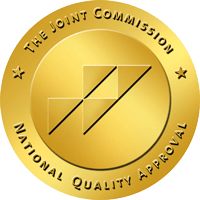Street heroin laced with dangerous additives like fentanyl led to a rash of fatal overdoses, a major reason why unintentional drug overdoses have become the leading cause of accidental death in the United States. With roughly half of all people in recovery experiencing at least one relapse, medication assisted treatments have modernized to offer more options. Vivitrol vs Suboxone both offers additional support during recovery, with both containing opioid receptor blockers.
Opiate abuse and heroin use have drastically increased over the past ten years. In fact, heroin use has more than doubled among Americans between the ages of 18 and 25 in the past decade. Between 2002 and 2013, fatal heroin and opiate overdoses have increased by more than 400%. In response to the growing opiate epidemic and a massive increase in overdoses, President Trump declared a public health emergency in 2017.
What is Opiate Addiction?
Opiates are central nervous system depressants that come from the opium plant. Some of the most common opiates include:
Opiates cause your brain to release excessive amounts of dopamine, a neurotransmitter that causes intense pleasurable feelings and calming emotions. Prescription opiate painkillers are also among the most common medications in the United States. Unfortunately, many opiate prescription medications end up on black markets.
Heroin is an especially dangerous opiate because many users choose to use the drug intravenously. When users inject heroin, they are at an increased risk of overdosing and experiencing serious medical issues. Injecting heroin can lead to staph infections, abscesses, and cysts.
Opiates are highly addictive. When you become addicted to any opiate, you can experience painful withdrawal symptoms that make it difficult to stop without help. Many times, users who become addicted to opiate painkillers transition to heroin because heroin is far cheaper. More than 40% of heroin addicts cite that they were previously abusing opiate painkillers like OxyContin.
Opiate addiction causes you to continue using and abusing opiates despite negative consequences and a desire to stop. This means that even if you lose a job because of your substance abuse, or encounter legal problems, you still have a desire to continue using. Addiction to opiates also changes your brain chemistry and makes your brain dependent on opiates in order to release dopamine, leading to intense cravings whenever you are exposed to triggers.
The severity and intensity of cravings and withdrawal symptoms make relapsing a serious risk during recovery.
Vivitrol vs Suboxone
About half of all people in recovery for a substance abuse problem relapse at least once. When you relapse, you’re at an especially high risk of overdosing because your tolerance greatly decreases following detox. Because of the risks of relapsing, Vivitrol vs Suboxone are both medication assisted treatments commonly used to treat opiate addiction.
Vivitrol is an injection that blocks your opiate receptors. This means that if you use opiates while on Vivitrol you will not get high. A Vivitrol shot lasts for 28 days. Suboxone is a pill or film strip that contains buprenorphine and naloxone. Buprenorphine is a time released medication that reduces cravings, while naloxone blocks your opiate receptors. Patients take Suboxone at least once a day and it is effective for up to 48-72 hours.
Whether you decide to take Vivitrol vs Suboxone, both are highly effective evidence-based treatments that can help improve your ability to remain abstinent.
Finding Treatment Today
If you or a loved one is struggling with opiate addiction, choosing Vivitrol vs Suboxone can make the recovery process easier. Pillars Recovery, a leading addiction treatment center, offers medication assisted treatments. Call us today at 866.782.0247 to learn more about your treatment options.







